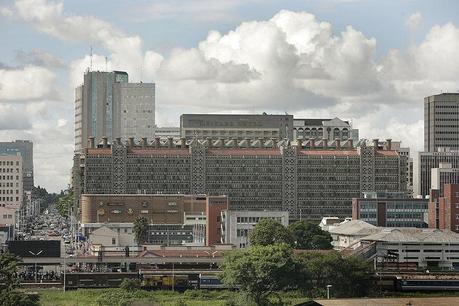 “After 3.8 billion years of research and development, failures are fossils, and what surrounds us is the secret to survival.” -Janine Benyus, co-founder of the Biomimicry Institute and founder of the Biomimicry Guild
“After 3.8 billion years of research and development, failures are fossils, and what surrounds us is the secret to survival.” -Janine Benyus, co-founder of the Biomimicry Institute and founder of the Biomimicry Guild
Our current world is dangerously unsustainable. Greenhouse gas levels are reaching dangerous tipping points, climate change is a reality, freshwater shortages are likely to become an issue in the near future, large vortexes of plastic waste are spinning around in the ocean, mass species extinction is a serious encroaching threat, materials are being overconsumed and forests are being overharvested (leading to soil erosion and loss of topsoil), all while the world’s population continues to grow and is expected to break the 7 billion mark sometime this year. Sustainability needs to become the theme of our discussions on development. Humans are not separate from nature, we are part of it. Nature has been around much longer than us, and in it we can find wisdom far greater than anything humans have thought up in the past couple thousand years. The goal shouldn’t be to overcome nature; we’ll never win that battle. Our goal should be to work in cooperation with nature, learning from it as we go along. Nowhere is this more applicable than in our cities.
Cities can be very sustainable places to live when built in accordance with nature rather than in defiance of it. Unfortunately, this hasn’t been done too much. The U.S. Green Building Council states that buildings are responsible for 70% of all electricity consumption in the U.S. and are responsible for 40% of CO2 emissions. Yet there are buildings out there today that only use a small portion of the energy conventional buildings use. Why don’t we make all buildings this way? Buildings are only the beginning to becoming more sustainable; a green building in an unsustainable city is still unsustainable. Biomimicry can be applied on a much larger scale than just individual buildings. City planning needs to include biomimetic concepts in order for the urban landscape to become a truly sustainable place.
Biomimicry in Buildings
The green building industry is a field that has grown rapidly over the past few years and will continue to do so as we strive toward a more sustainable living on earth. The first step towards a biomimetic city is applying biomimicry to how we design and construct buildings. This needs to be applied to all buildings, not just a few here and there. The Eastgate Centre in Zimbabwe is one example of biomimicry in buildings. The building was modeled on termite mounds. Termites constantly open and close heating and cooling vents throughout the day to in order to maintain the interior temperature of their mounds at 87 degrees Fahrenheit. Zimbabwe’s largest shopping and office complex, the Eastgate Centre has a similar ventilation system that constantly draws outside air in to be cooled or heated. The old air is exhausted out through ports in the ceiling, always keeping the interior air cool and fresh. Even cooler: the building has no air conditioning system, allowing it to use less than 10% of the energy of similarly-sized buildings. This is a great example of the built environment incorporating its natural surroundings into its design. This isn’t new technology; it just requires looking at buildings differently and asking the right questions. The National Building Museum in Washington, DC, built in the 1880s, used a ventilation system similar to the Eastgate Centre and the termites, pulling in air at the bottom and exhausting hot air at the roof. Now imagine a whole city made of similar buildings that require very little energy, planned on a landscape that is a self-sustaining ecosystem in itself.
Biomimicry in Planning
The Biomimicry Guild is working together with HOK, one of the world’s largest architectural developers in the world, to create city plans that are inspired by nature. They look at the natural ecological system of the city’s location and determine how it should perform. This means understanding metrics like how much rainfall should be absorbed into the ground and how many tons of carbon should be there. “We need cities to perform like ecosystems, not just look like them,” says Janine Benyus. A city that reprocesses all its waste, doesn’t damage the land or pollute its waters or air, understands its limits, is powered by local sources of energy, and works in cooperation with nature–now that is a sustainable idea.
Just as humans are part of nature, so are buildings and cities. Everything comes from the Earth, and once it is understood that all of our man-made creations came from somewhere in the ground we can begin to truly see the potential of the sustainable, biomimetic city.
[Image]

